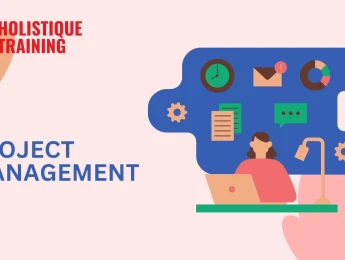Transporting heavy goods within onshore and offshore supply chains requires effective planning and negotiation between packing companies, distribution centres, and freight management sites. The risks of heavy item transportation can not only be damaging to businesses financially if the goods don’t arrive at their destination on time. Still, they could also present a safety hazard if not handled professionally and with care.
To understand the best practices of heavy freight transportation on land and overseas, you must implement a strong operational framework, develop a risk management and mitigation strategy and plan for change using critical assessments.
Moving forward within the freight transportation industry will require a strong grasp of the economic implications of moving large amounts of heavy goods. You must develop innovative and cost-effective solutions to transport heavy goods safely, maintain professional relationships, and grow your global offering.
Upon completion of this course, participants will be able to:
- Identify the risks in heavy lifting and transportation.
- Understand the health and safety implications of moving heavy goods.
- React effectively in emergencies.
- Conduct regular audits and risk assessments regarding procedures.
- Effectively train and manage a team of onshore and offshore employees remotely.
- Create frameworks for large-scale projects.
- Plan for change and understand the need for flexibility.
- Keep accurate documentation and maintain all records for future reference.
- Review processes and increase efficiencies where possible.
This course is for:
- Operations Managers
- Safety Engineers
- Heavy Lifting Technicians
- Lifting & Rigging Specialists
- Freight Forwarders
- Installation Engineers
- Cargo Specialists
- Packing Specialists
- Project Engineers
- Business Owners
- Directors of Freight Services
This training course uses several learning techniques to encourage participants to generate new and innovative strategies for heavy goods transportation.
You will participate in group discussions that examine real-life transportation methodologies and practices to discover what will work best in your own business. Practical exercises will allow you to assess risks and understand how to avoid them, and health and safety presentations will give you an opportunity to review your business practices to improve your working environment.
Day 5 of each course is reserved for a Q&A session, which may occur off-site. For 10-day courses, this also applies to day 10
Section 1: Your Equipment Needs
- Your heavy-lifting starter pack.
- Crane types - what will work best for your goods.
- The structure, benefits and functions of your chosen crane.
- Land cranes vs. sea cranes.
- Other lifting accessories.
Section 2: Heavy Lifting & the Hazards
- Heavy lifting safety standards.
- Keeping accurate records.
- What affects your lifting capabilities?
- ASTM, EN, ISO & BS regulations.
- Strategic plan for heavy lifting.
- Main cranes and tail cranes.
Section 3: Health & Safety Regulations
- Planning your heavy lifting strategy.
- Factors that could affect your lift.
- How to service and maintain your cranes.
- Employee safety awareness and maintenance.
- EN ISO 17776.
- Hazard identification.
Section 4: Risk Assessments
- Risk assessment records and documentation.
- Risk mitigation and where risk is acceptable.
- Auditing and revisiting changes.
- Follow up and review.
- Risk matrix ISO 17776 and Guide 73.
- How to report a hazard, risk or accident.
Section 5: Onshore Transportation
- The economic benefits of onshore transportation.
- Computerised controlled lifting.
- The stability of heavy hauling.
- SPMT tipping and ground bearing capacity.
- Stabilising techniques based on ground level.
Section 6: Offshore transportation & Shipping
- Offshore transportation supporting global company growth.
- ISO and DNVGL-ST-0378
- Sailing with heavy goods.
- Shipping hazards and how to load safely.
- Conducting a motion analysis.
- Weather conditions and their effects on heavy lifting.
- Creating a pre-sail checklist.
- Lo-Lo and Ro-Ro solutions.
Upon successful completion of this training course, delegates will be awarded a Holistique Training Certificate of Completion. For those who attend and complete the online training course, a Holistique Training e-Certificate will be provided.
Holistique Training Certificates are accredited by the British Assessment Council (BAC) and The CPD Certification Service (CPD), and are certified under ISO 9001, ISO 21001, and ISO 29993 standards.
CPD credits for this course are granted by our Certificates and will be reflected on the Holistique Training Certificate of Completion. In accordance with the standards of The CPD Certification Service, one CPD credit is awarded per hour of course attendance. A maximum of 50 CPD credits can be claimed for any single course we currently offer.
- Course Code IND03-102
- Course Format Classroom, Online,
- Duration 5 days









